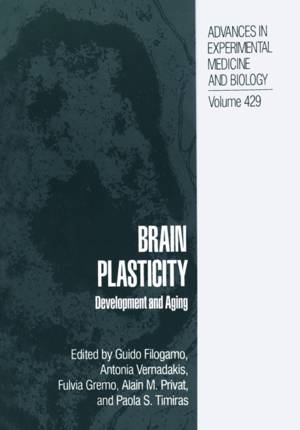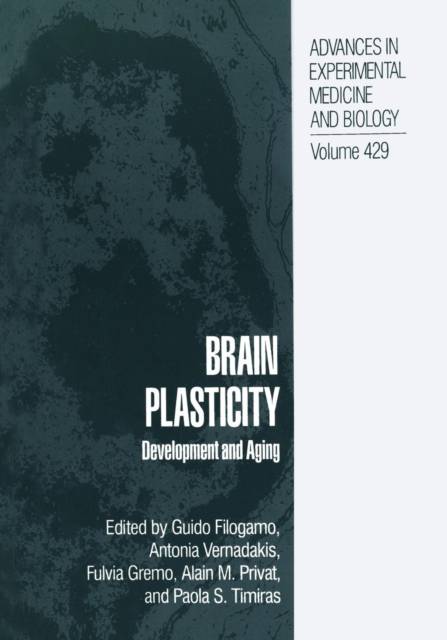
- Afhalen na 1 uur in een winkel met voorraad
- Gratis thuislevering in België vanaf € 30
- Ruim aanbod met 7 miljoen producten
- Afhalen na 1 uur in een winkel met voorraad
- Gratis thuislevering in België vanaf € 30
- Ruim aanbod met 7 miljoen producten
Zoeken
Brain Plasticity
Development and Aging
€ 181,95
+ 363 punten
Omschrijving
This book is dedicated to the memory of two colleagues and friends, Amico Big- nami and Hendrick Vander Los. They were both pioneers in their fields: Bignami on on- togenesis and function of neuroglia, and Van der Los on brain plasticity and neuronal circuitry. Their ideas are further pursued by the authors in this book. Some of the chapters are products of a conference dedicated to these two scientists entitled "Recent Advances in Neurobiology: Plasticity and Regeneration." The conference was organized by the Insti- tute of Developmental Neuroscience and Aging and sponsored by the Region della Valle d' Aosta. Also, several chapters are written by colleagues who knew well either Amico or Hendrick and were invited to contribute to this dedication. The book is divided in four sections. The first part covers neurons, neuroglia includ- ing microglia, their plasticity and phenotypic expression, and specific functions and inter- actions. It is now established that neuroglia are an intimate component of the neuronal environment and thought to regulate several neuronal functions. More recently microglia have become prominent as the immune cells in the CNS. This part contributes new infor- mation for these cellular interactions. The second part deals with neuronal and glial cell plasticity as it relates to regeneration and neurodegeneration, more or less an extension of Part I. In recent years the role of transplantation in regeneration has become promising.
Specificaties
Betrokkenen
- Uitgeverij:
Inhoud
- Aantal bladzijden:
- 332
- Taal:
- Engels
- Reeks:
- Reeksnummer:
- nr. 429
Eigenschappen
- Productcode (EAN):
- 9781475795530
- Verschijningsdatum:
- 8/05/2013
- Uitvoering:
- Paperback
- Formaat:
- Trade paperback (VS)
- Afmetingen:
- 178 mm x 254 mm
- Gewicht:
- 598 g

Alleen bij Standaard Boekhandel
+ 363 punten op je klantenkaart van Standaard Boekhandel
Beoordelingen
We publiceren alleen reviews die voldoen aan de voorwaarden voor reviews. Bekijk onze voorwaarden voor reviews.










